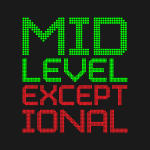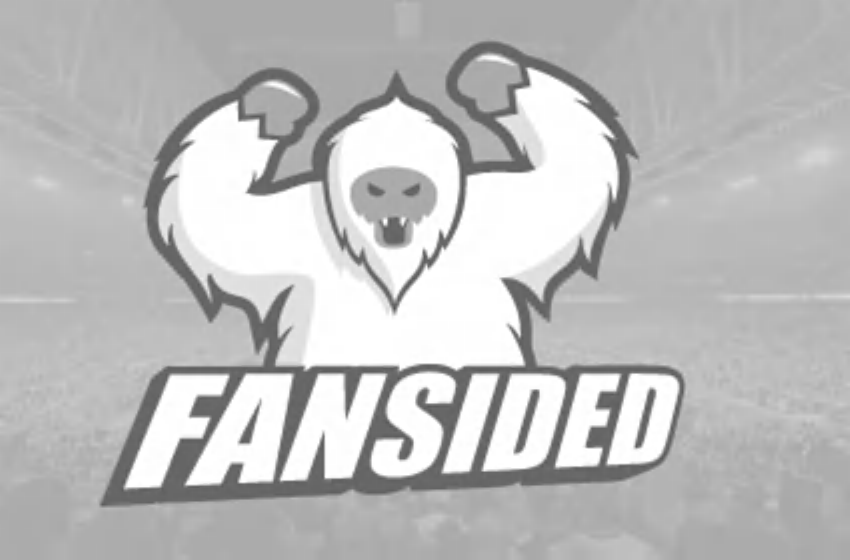Eastern Conference Free Agency Cap Space Primer
The massive disparity between the Eastern and Western Conferences may become much more narrow in the coming weeks.
Four of the East’s 15 teams could have over $20 million of cap space available this summer, based on the projected $63.2 million salary-cap threshold, even after factoring in the contracts of first-round picks. An additional six squads could free up at least $10 million in cap room to play around with in free agency.
In total, only four teams in the East are currently over the cap—and once Chicago amnesties Carlos Boozer, that number drops to three—compared to a whopping eight teams in the West. Even if many of these squads strike out on the top-tier free agents, having that much money at their disposal could help them add complementary options and fortify their depth.
Here’s a look at which Eastern Conference teams are entering July with cap space, and who those squads could pursue in free agency.
Note: All salary figures courtesy of Spotrac.com. These cap-space calculations include salaries for first-round picks at 100 percent of the rookie-salary scale. They assume that each team has renounced its rights to all free agents, which, of course, won’t actually happen. The figures here thus reflect the maximum amount of cap space each team could have available this offseason, although many teams featured here will have far less (if any at all).
If a team has fewer than 12 players under contract, a cap hold of the rookie minimum salary ($507,336) is factored into the cap calculation for each player fewer than 12. Teams can’t begin signing players until July 10, the first day after the July Moratorium.
1. Miami Heat ($54,747,088): With LeBron James, Dwyane Wade, Chris Bosh, Udonis Haslem and Chris Andersen all opting out, the Miami Heat are entering free agency with a record $54.7 million in cap space. Granted, the Heat only have three players under contract: Norris Cole, Shabazz Napier, and Justin Hamilton (non-guaranteed). Assuming the Big Three re-sign, they’ll gobble up a grand majority of the Heat’s available cap space, likely leaving Miami with little more than a non-taxpayer’s mid-level exception and the bi-annual exception (at most) to use for other additions. If James, Wade and Bosh each decide to take a significant pay cut, however, it could have major ripple effects on the rest of the free-agent market.
2. Philadelphia 76ers ($28,985,652): One benefit of trading for Dario Saric at No. 12? Since he’s stuck in Europe this season, his salary won’t count against the Sixers’ books. Head coach Brett Brown has openly admitted the squad won’t be pursuing a top-tier free agent this summer, but don’t expect GM Sam Hinkie to go into hibernation. The Sixers could take on salary from a team looking to clear cap space for a major free-agent signing, similar to what Utah did with Golden State last July. Carlos Boozer and Jeremy Lin could be two highly attractive salary-dump options, depending on the combination of young players and draft picks packaged with each.
3. Orlando Magic ($23,445,522): Orlando freed up a significant amount of cap space in the days leading up to free agency by trading Arron Afflalo ($7.5M) and waiving Jameer Nelson (net gain of $6M). Even after factoring in the salaries of their two top-10 picks, Aaron Gordon and Eflrid Payton (roughly $5.3M), the Magic will still have more than $23 million in cap space to play around with this summer. With Nikola Vucevic and Tobias Harris eligible for extensions, Orlando could opt to be conservative in free agency; however, Trevor Ariza or Luol Deng would be intriguing targets if the Magic do decide to make some moves.
4. Detroit Pistons ($23,014,789): The Detroit Pistons created enough cap space for a max-contract player by waiving Chauncey Billups on the eve of free agency. Now, it’s up to new team president Stan Van Gundy to sort out the squad’s mess of a frontcourt. Greg Monroe is a restricted free agent who should command serious attention (and at least one major offer) from multiple teams, including Atlanta and Orlando, per ESPN.com’s Marc Stein. If SVG can re-sign Monroe for a less-than-max deal and somehow manage to trade Josh Smith, he’ll deserve the Executive of the Year award on the spot.
5. Charlotte Hornets ($16,772,312): The Hornets have nearly $17 million of cap space in their disposal this summer—and that’s not counting Alonzo Gee’s fully non-guaranteed $3 million contract. Owner Michael Jordan hasn’t shied away from saying Charlotte will be aggressive in the free-agent market, which led Grantland’s Zach Lowe to name the squad as one of the favorites to land Indiana shooting guard Lance Stephenson. After shoring up their front line by drafting Noah Vonleh ninth overall, the Hornets should look to strengthen their backcourt during free agency, either via Stephenson or another top-tier guard.
6. Atlanta Hawks ($16,373,170): By trading Lou Williams and Lucas Nogueira for John Salmons, who they’ll be waiving by July 10, Atlanta freed up roughly $4 million of cap space. The Hawks are now poised to be major players in the free-agent market, which should have other teams nervous. After shipping out Williams, the Hawks are exceptionally thin on the wing, and thus could make a play for a restricted free agent like Gordon Hayward or Chandler Parsons. Luol Deng, Trevor Ariza and/or Lance Stephenson could also be intriguing targets for Atlanta, with the former already linked to the squad by Wojnarowski.
7. Cleveland Cavaliers ($12,232,995): Now that the “LeBron returning home” dream is on life support, the Cavaliers can rightfully begin focusing on finding complementary pieces for their bevy of young top-five picks. With both Luol Deng and Spencer Hawes set to become free agents, the Cavs could be losing two-fifths of their starting lineup, although the addition of Andrew Wiggins will offset Deng’s departure. After passing on Joel Embiid during the draft, Cleveland’s No. 1 priority should be finding a long-term center, which makes Marcin Gortat a name worth monitoring.
8. Washington Wizards ($12,064,328): The Wizards have $12 million in available cap space on paper, but two-fifths of their starting lineup is entering unrestricted free agency. Retaining center Marcin Gortat will likely cost Washington most (if not all) of its available cap space, leaving only the non-taxpayer’s mid-level exception if it allows swingman Trevor Ariza to walk. Allowing Gortat to leave should be a non-starter for the Wizards, barring a surprise run at one of the available top-tier free agents.
9. Milwaukee Bucks ($11,207,360): Milwaukee managed to parlay a comically poor season into the No. 2 overall pick, landing its top target, Jabari Parker, in the process. Now it’s time for the Bucks to build around Parker and Giannis Antetokounmpo. If they can clear their glut of big men by trading either Larry Sanders or Ersan Ilyasova, they’ll have around $20 million in cap space this summer. Given how dismal Milwaukee was last season, however, it may struggle to lure a prized free agent without badly overpaying for them.
10. Toronto Raptors ($10,701,294): The Raptors beat the buzzer and traded John Salmons to Atlanta a day before the deadline to waive him. In return, Toronto brought back Lou Williams ($5.4M) and Lucas Nogueira, who would be eligible for a salary just under $1.5 million if he signs this season. One drawback to the trade: Had the Raptors simply waived Salmons, they would have entered free agency with roughly $16.1 million in cap space. Williams gives them an insurance policy if Kyle Lowry takes his talents to South Beach (or elsewhere), but the trade limits Toronto’s ability to be a major player in free agency if Lowry does depart.
11. Chicago Bulls ($8,255,524): At the moment, the Bulls are $8,544,476 over the salary-cap threshold. However, since it’s a foregone conclusion that Chicago will amnesty Carlos Boozer this summer, this $8.25 million figure is what the squad will be left with following Boozer’s departure. With Nikola Mirotic reportedly U.S.-bound, Chicago could pursue a sign-and-trade for Carmelo Anthony or stand pat with the additions of Mirotic, rookie Doug McDermott, and a few cheap complementary pieces.
12. Boston Celtics ($2,729,230): After adding Marcus Smart and James Young on draft night, the Celtics are left with less than $3 million in cap space heading into free agency. With Avery Bradley entering restricted free agency, Boston likely can’t do much more this offseason outside of re-signing its own guys. If the Celtics do want to make wholesale changes to their roster, they realistically only have two options at their disposal: trading for Kevin Love (unlikely) or trading away Rajon Rondo (not altogether unfeasible, given the addition of Smart).
At the moment, the New York Knicks, Indiana Pacers and Brooklyn Nets are all projected to be over the salary-cap threshold of $63.2 million.


